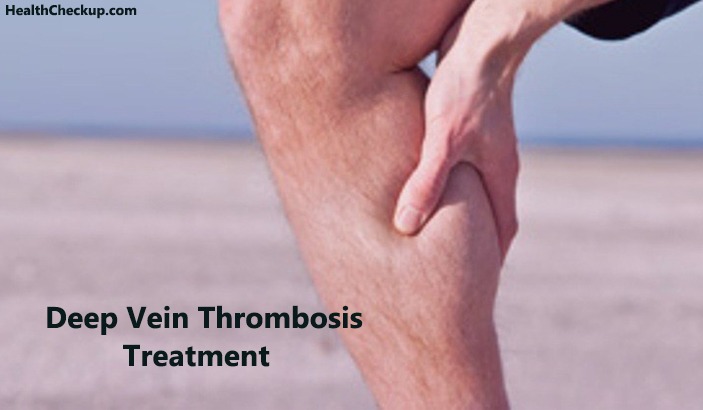Deep Vein Thrombosis (DVT) is a condition that is triggered by the formation of blood clots in deep veins, mostly in the legs. It may lead to serious health complications. The symptoms include swelling and pain in the affected legs. The reasons could be numerous. The reasons could be surgery or genetic roots. The diagnosis is done through special x ray or ultrasound tests. The treatment focuses on stopping the clot from growing or traveling to upper body organs. The blood thinner drugs are given through special intravenous medication are also given to the victims. Adopting lifestyle changes and avoid sitting in same posture can also help.
Blood clotting is a vital need for humans to survive from blood loss related woes, but at times, clotting can lead to various physiological problems. One such example is the condition called Deep vein thrombosis (DVT). It takes place when a blood clot forms in the deep veins, more so in the legs. While blood clots forming in the superficial veins are seldom serious, those forming in deep veins need medical intervention or else consequences can be serious. The clots may break loose and then travel through the bloodstream and reach the heart or lungs. This can cause severe problems. Deep Vein Thrombosis Tests are carried out to determine its existence.
How Deep Vein Thrombosis (DVT) is Formed?
As a matter of fact, DVT can take place mostly when your body is inactive. These can happen to people who stay in the same position for a prolonged period, such as bedridden or paralyzed people. At times, a surgery gone awry or a deep injury can damage the blood vessels in the body and may lead to onset of DVT. Blood clotting issues running in genetics can also be the cause.
Who are at Risk?
While DVT can affect a lot of people from various age groups, some people are more prone to developing it than others. For example, people in their 50s and above are more susceptible to it than younger lot. Those undergoing hormone therapy and heavy smokers are also more at risk. Some forms of cancer can cause it as well as inflammatory bowel disease may lead to it. Sometimes, women taking birth control pills may also develop this condition.
Major Symptoms of Deep Leg Thrombosis
The Deep Vein Thrombosis(DVT) Tests are conducted when the signs and symptoms are spotted. These are:
- The major symptom of DVT is swelling of affected body part, mostly leg. The affected leg may also look redder.
- The affected leg may cause pain.
- It may feel warmer.
However, not all signs are observed in all victims. The severity of those symptoms can also vary greatly. The most severe symptom of DVT is a condition known as pulmonary embolism. It occurs when the blood clots break loose in vein and reach your lungs and block the veins.
Diagnosis of Deep Vein Thrombosis
If the doctor thinks you have developed DVT, he or she may ask you to undergo a color doppler ultrasound test. This helps detect the presence of any clot thwarting blood flow in the vessels. However, sometimes, doctors prefer carrying out other Deep Vein Thrombosis Tests. For example, a special type of X ray test called a Venogram is conducted to detect DVT in people.
Deep Vein Thrombosis Treatment
The treatment for DVT is aimed at controlling the clot from growing and stopping it from getting carried in the bloodstreams. The majority of patients developing DVT are usually given specific blood thinners to ensure clots do not form. They may need to take such medications for 3 months or more. However, taking Blood thinners do not actually break up any existing blood clots. They actually interrupt the blood clotting process and thwart existing clots from growing larger.
Thrombolytic drugs are given when regular blood thinners fail to produce many results. These are given in intravenous manner.
Apart from taking medications, making some lifestyle changes may be required to get benefits. Wearing specially made compression stockings may help the victims.
How to Prevent the Onset of DVT?
While you can opt for the available Deep Vein Thrombosis(DVT) tests and avail treatment options, it is better to take preventive approach. There are, in fact, a number of steps you can take to prevent its onset.
- After undergoing a surgery, you may start taking blood thinner medications after talking with the doctor.
- You may wear compression stockings.
- You may evade sitting in a posture for a long time as and when possible. This is more applicable when you sit in flights for a long time.
- It may help to do light leg exercises at times.
- You may also evade wearing very tight lower clothing that may restrict normal blood flow in legs.
Where it All Leads To?
Deep vein thrombosis is a condition in which blood clot forming mostly in the legs and thighs can lead to serious health complications. It can be triggered by genetic roots and many external factors too. Specific tests are required for diagnosis and treatments involve using blood thinners and sometimes lifestyle changes can be helpful.
Medically Reviewed By

Maanasi specializes in health topics including diet and nutrition. A mother of an untiring seven year old, she enjoys nurturing her love affair with English. She is often found nestled with a book, plopped against a dozen pillows, smiling away at the brink of finishing yet another book of the many dozens, that adorn the shelves of her Mini Library!









